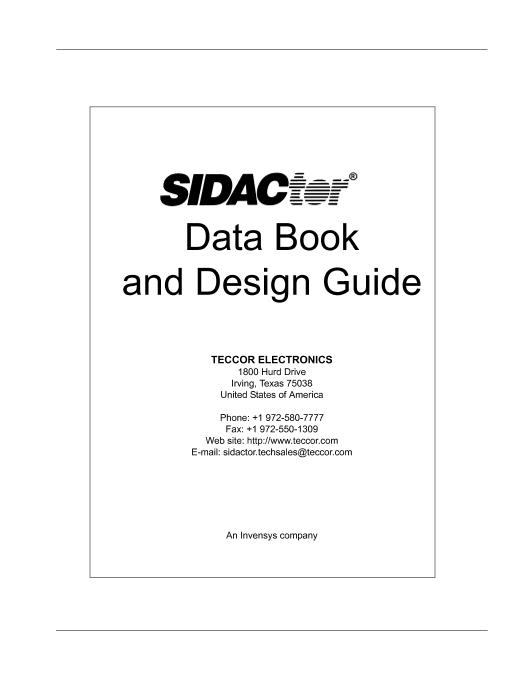
B1101U
| Model | B1101U |
| Description | solid state crowbar devices |
| PDF file | Total 212 pages (File size: 2M) |
| Chip Manufacturer | TECCOR |

TIA-968 (formerly known as FCC Part 68)
TIA-968 (formerly known as FCC Part 68)
TIA-968 applies to all terminal equipment connected to the Public Switched Telephone
Network (PSTN) and holds the “rule of law” by congressional order.
The purpose of TIA-968 is to provide a set of uniform standards to protect the telephone
network from any damage or interference caused by the connection of terminal equipment.
This standard includes environmental simulations such as vibration tests, temperature and
humidity cycling, drop tests and tests for hazardous voltages and currents, as well as tests
for signal power levels, line balance, on-hook impedance, and billing protection. All these
standards must be met before and after the environmental tests are applied.
Overvoltage Test
TIA-968 compliant equipment must undergo an overvoltage test that includes a Type A and
Type B Metallic Voltage Surge and a Type A and Type B Longitudinal Voltage Surge. These
surges are part of the environmental simulation, and although a provision does allow the
EUT to reach an open circuit failure mode during the Type A tests, failures must:
1. Arise from an intentional design that will cause the phone to be either disconnected from
the public network or repaired rapidly
2. Be designed so that it is substantially apparent to the end user that the terminal
equipment is not operable
A common example of an acceptable failure would be an open circuit due to an open
connection on either Tip or Ring.
For Type B surges, equipment protection circuitry is not allowed to fail. The EUT must be
designed to withstand Type B surges and continue to function in all operational states.
Metallic Voltage Surge
The Type A and Type B Metallic Voltage Surges are applied in both the positive and
negative polarity across Tip and Ring during all operational states (on-hook, off-hook,
ringing, and so on). The Type A surge is an 800 V, 100 A peak surge while the Type B
surge is a 1000 V, 25 A peak surge, as presented in Table 4.14.
Table 4.14
TIA-968 Voltage Surge
Peak
Voltage
(V
PK
)
±800
±1500
±1000
±1500
Rise &
Decay Time
(Voltage Waveform)
10x560 µs
10x160 µs
9x720 µs
9x720 µs
Peak
Current
(A)
100
200
25
37.5
Rise &
Decay Time
(Current Waveform)
10x560µs
10x160µs
5x320µs
5x320µs
Repetitions
Each Polarity
1
1
1
1
Surge
Type
Metallic A
Longitudinal A
Metallic B
Longitudinal B
Notes:
• For Type A surges, the EUT may pass either “operationally” or “non-operationally.”
• For Type B surges, the EUT must pass “operationally.”
• The peak current for the Type A longitudinal surge is the total available current from the surge generator.
• The peak current for the Type B longitudinal surge is the current supplied to each conductor.
http://www.teccor.com
+1 972-580-7777
4 - 14
SIDACtor
®
© 2002 Teccor Electronics
Data Book and Design Guide


























































































































































































































